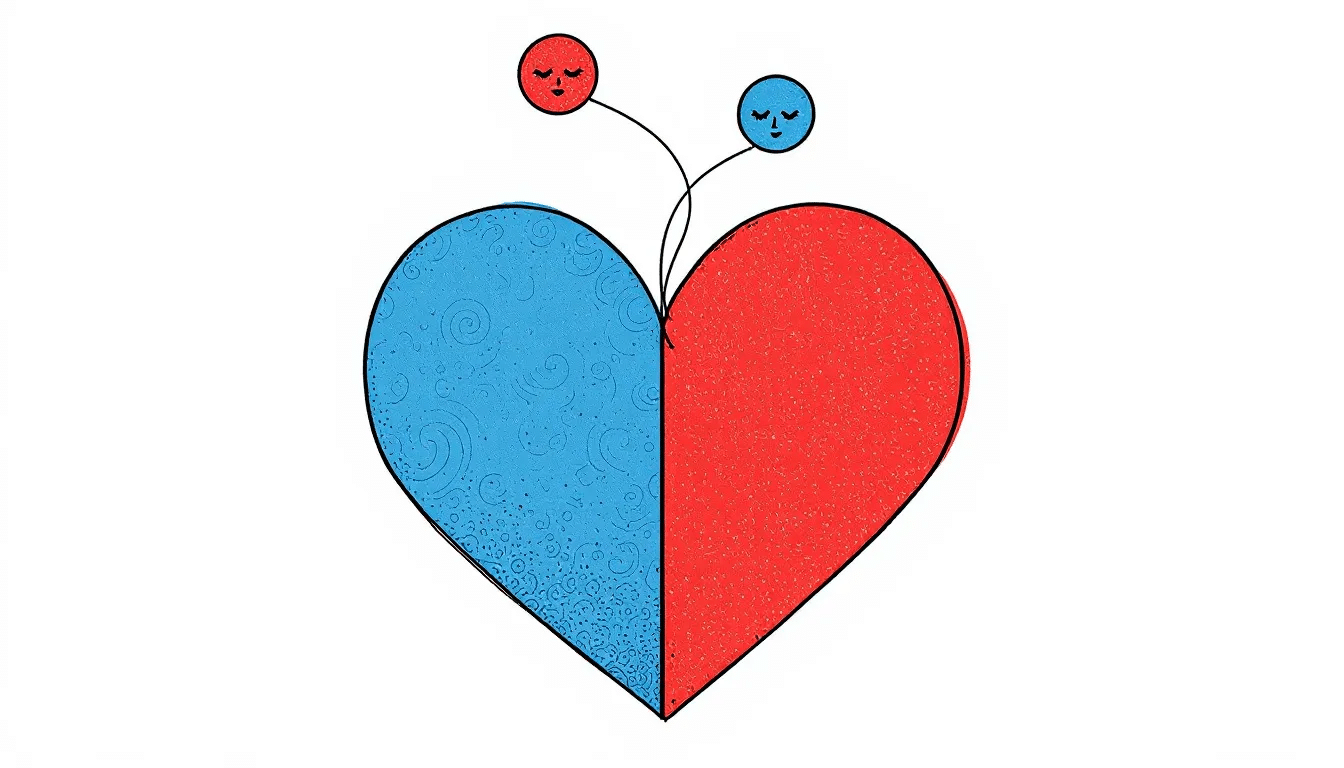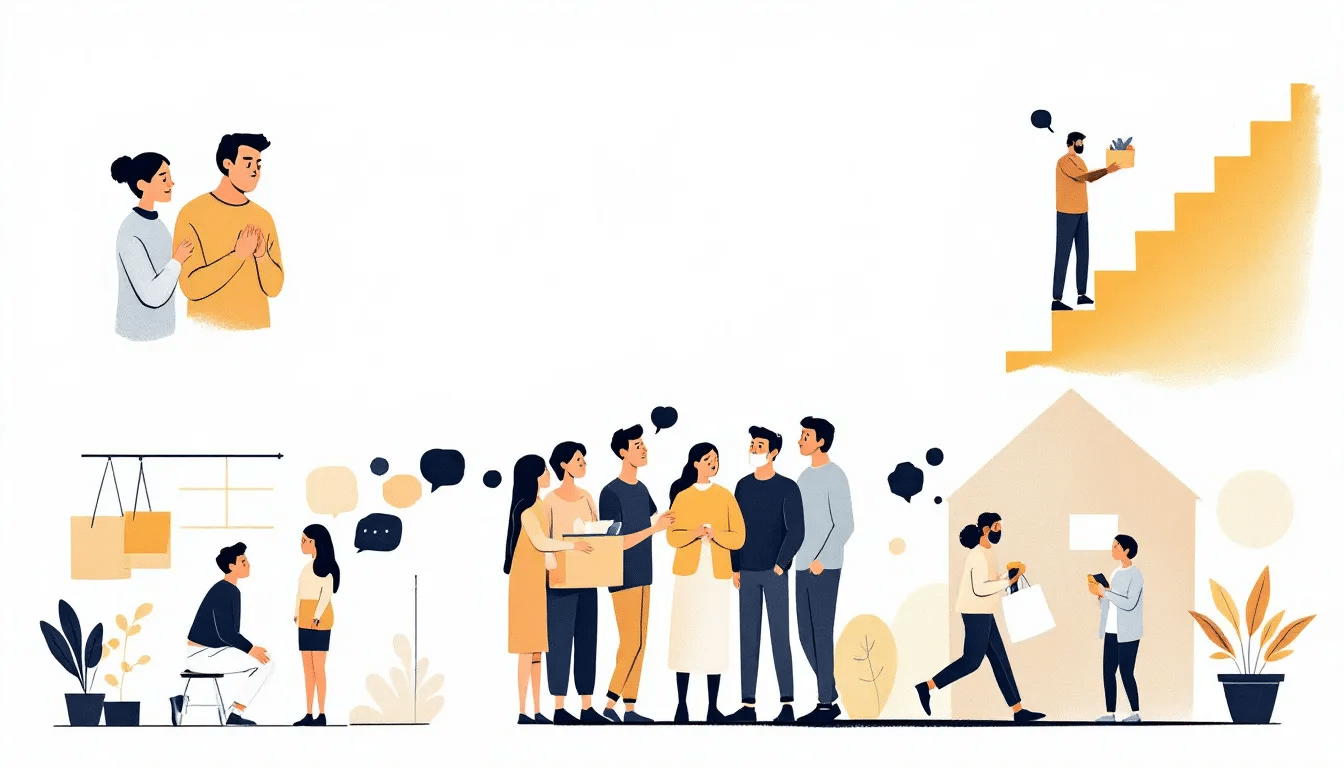Empathy vs Sympathy: What’s The Difference
What’s the difference between empathy vs sympathy? Empathy involves sharing and understanding another person’s emotions. Sympathy, in contrast, means recognizing those feelings without experiencing them. Understanding the difference between these two words is crucial, as it will help you grasp these distinctions and why empathy vs sympathy often leads to stronger connections.
Key Takeaways
- Empathy involves deeply understanding and sharing another’s feelings, while sympathy is simply acknowledging someone’s distress without emotional connection.
- Practicing empathy can improve relationships, enhance mental health, and foster community by promoting a sense of belonging and reducing feelings of isolation.
- Developing empathy can be achieved through active listening, perspective-taking, and reading fiction, all of which help individuals connect more authentically with others.
Defining Empathy and Sympathy
Emotions play a pivotal role in forming connections with others. While both empathy and sympathy involve responding to another person’s feelings, they do so in fundamentally different ways. Empathy fuels connection by allowing individuals to vicariously experience and share others’ emotions, creating a profound emotional bond. It involves a person’s ability to recognize and share the emotions of others, which is essential for understanding interpersonal dynamics. On the other hand, sympathy acknowledges these experiences but does not create the same depth of connection.
The main difference between empathy and sympathy lies in the emotional response they evoke. Empathy means truly understanding and sharing in another’s feelings, fostering a sense of connection and shared human experience. Sympathy, however, is merely an acknowledgment of someone’s distress without sharing in their emotional journey.
What is Sympathy?
Sympathy means recognizing someone else’s trouble without sharing in those emotions. It is a supportive acknowledgment from a distance, which does not necessarily motivate us to connect more deeply with the person in distress. When someone expresses sympathy, they are often acknowledging the person’s pain without truly engaging with it. A proper response to someone in pain is to acknowledge their suffering without making comparisons.
Many people mistakenly equate sympathy with empathy, overlooking the critical differences between the two emotional experiences. While sympathy can convey commiseration and support, it lacks the intimate connection that empathy provides. This distinction is crucial in understanding how we interact with and support those around us.
What is Empathy?
Empathy means understanding and vicariously experiencing another person’s feelings. It involves imagining oneself in someone else’s situation, feeling their burden, and truly understanding their emotional state. This deeper level of emotional engagement allows empathetic people to connect more profoundly with others.
Sharing in another’s emotions through empathy fosters deeper connections and mutual understanding, far beyond what sympathy offers. This emotional engagement builds trust and stronger relational bonds.
Why Empathy Matters More
Empathy creates a deeper connection with others, while sympathy often distances oneself from another’s emotional experience. Empathy extends beyond human interactions to include any sentient being, highlighting its broader psychological implications. Engaging in discussions about emotions can significantly enhance one’s empathetic abilities. This deeper connection is essential in building authentic relationships and fostering emotional understanding.
Empathy enhances social interactions by allowing individuals to connect on a deeper emotional level, facilitating understanding in diverse contexts. High levels of empathy in relationships are linked to fewer arguments and conflicts, making individuals feel valued and understood. Practicing empathy in daily interactions can improve relationships and enhance emotional connections.
Fostering Connection
Empathetic individuals are more adept at building trust and intimacy through perspective sharing. Empathy fosters an environment of emotional safety, allowing vulnerability and deeper emotional intimacy. This leads to stronger relational bonds.
Engaging in perspective-taking can reduce biases and improve interpersonal understanding. This practice helps individuals engage with diverse media and experiences, enhancing their ability to understand different personal perspective.
Enhancing Compassion
Empathy inspires meaningful support actions that go beyond simple acknowledgment of someone’s pain. It compels individuals not only to understand the pain of others but also to take meaningful actions to support them. This proactive support is a key difference between empathy and sympathy, as it motivates individuals to address others’ suffering.
A prevalent myth is that feeling compassion for others is a sign of weakness; in reality, it demonstrates emotional intelligence. Compassion involves sympathy that can lead to a person’s feelings of superiority or judgment, which may hinder genuine emotional support during someone’s grief.
Improving Mental Health
Practicing empathy can alleviate feelings of isolation and promote a strong sense of community. Regularly engaging in empathetic practices can significantly reduce feelings of loneliness and enhance emotional well-being. This sense of community belonging is crucial for mental health.
Exposure to fictional narratives (for example, reading more fiction books) allows readers to experience diverse emotional journeys and viewpoints, deepening their understanding of others and enhancing a person’s experience. This practice can significantly improve communication and emotional support among family and friends, leading to stronger personal relationships.
Practical Ways to Develop Empathy
Empathy is a skill that can be learned and practiced. By listening to others’ stories and witnessing their pain, individuals can develop a deeper understanding and connection with those around them. Engaging in community service is another effective way to foster empathy, as it allows individuals to listen to and address the needs and experiences of others in their community.
Developing empathy involves several practical methods, including active listening, perspective-taking, and reading fiction. These practices can help individuals practice empathy and enhance their ability to connect with others.
Active Listening
Active listening, which involves focusing on a partner’s words and emotions, is crucial for demonstrating empathy. Engaging in active listening means giving full attention to the speaker and responding thoughtfully to show genuine interest. This practice not only shows that you care but also helps you understand the speaker’s emotions more deeply.
Expressing empathy requires vulnerability, as it involves actively listening and sharing in another’s emotional struggle. Practicing active listening fosters deeper connections and enhances empathetic responses.
Perspective-Taking
Perspective-taking involves practicing imagining oneself in another person’s situation to better understand their emotions and experiences from a person’s perspective. This practice helps build trust and intimacy, allowing more profound connections between individuals.
Through perspective-taking, individuals can develop compassion and take meaningful actions to support others, going beyond mere acknowledgment of pain. Active listening is a vital practice that enhances perspective-taking by ensuring individuals fully engage and respond thoughtfully to others’ experiences.
Reading Fictional Character
Reading about fictional character experiences allows readers to engage with different emotional narratives, which is a valuable way to cultivate empathy. It transports the reader emotionally into another’s experience, helping them understand and relate to the feelings and perspectives of others.
Encountering diverse characters and their emotional journeys helps readers better understand and relate to others’ feelings and perspectives, significantly enhancing real-life empathy.
Common Misconceptions About Sympathy
Sympathy expresses care but keeps emotional distance, often viewed as a social response rather than an intimate one. When showing both sympathy, there is a tendency to offer advice or feel relieved about not facing the same struggles. Comparative grief refers to comparing personal suffering with others’ situations, which can be a common aspect of sympathetic responses.
Addressing these misconceptions is crucial in understanding the limitations of sympathy and the importance of empathy in forming deeper connections.
Sympathy as Pity
Sympathy often involves feeling bad for someone else’s misfortune but lacks the deeper connection found in empathy. Pity is often viewed negatively, but it can simply reflect an acknowledgment of someone’s hardship, even if it lacks deeper emotional engagement.
Sympathy can sometimes manifest as a superficial response to others’ misfortunes, lacking the deeper understanding and connection that true empathy provides. Many believe that sympathy always prompts action, but it is possible to feel sympathy without taking any steps to help.
The Role of Sympathy
Sympathy means recognizing someone else’s feelings, often involving pity or sorrow for another’s suffering without sharing their emotions. While sympathy does not create deep emotional bonds, it can still raise awareness and motivate supportive actions for those in need.
However, sympathy plays a valuable role in providing support by prompting individuals to take action and show care for others. Understanding the role of sympathy can help individuals provide more effective support in times of need.
Empathy in Everyday Life
Empathy can be applied in various aspects of everyday life, including personal relationships, the workplace, and community engagement. Using empathy in personal relationships can significantly strengthen bonds as individuals understand and share each other’s joys and struggles.
Empathy in the workplace fosters better teamwork, enhances effective leadership, and contributes to a positive work environment. Applying empathy in community engagement helps to foster inclusivity and promotes collective well-being among community members.
In Personal Relationships
In personal relationships, empathy fosters deeper connections through genuine understanding of each other’s emotions. Sharing in loved ones’ joy, such as celebrating successes, strengthens emotional bonds.
Understanding each other’s emotions creates a foundation for more profound relational connections and a sense of fellow feeling. Sharing your own feelings can encourage others to open up, fostering deeper emotional bonds.
In the Workplace
Leaders who demonstrate empathy can improve team dynamics, leading to increased collaboration and morale among employees. Leadership grounded in empathy creates a supportive atmosphere, enhancing employee morale and collaboration.
Understanding colleagues’ perspectives can lead to more effective teamwork and problem-solving in professional settings. In the workplace, empathy encourages team members to understand each other’s perspectives and challenges, contributing to better collaboration.
In Community Engagement
Empathy plays a crucial role in fostering inclusivity, as understanding diverse perspectives can enhance community ties and collective well-being. Empathy in community interactions fosters inclusivity and addresses the needs of diverse groups.
Empathetic approaches to community challenges can promote collective well-being and encourage cooperative solutions. Community interactions grounded in empathy can promote inclusivity and create a sense of belonging among diverse groups.
Summary
Empathy and sympathy, while often used interchangeably, have distinct differences that impact our relationships and interactions with others. Empathy allows for deeper connections and a better understanding of others’ emotions, making it a crucial skill in personal and professional settings. Sympathy, while valuable in its own right, lacks the emotional depth that empathy provides.
By practicing empathy through active listening, perspective-taking, and engaging with diverse narratives, individuals can enhance their emotional intelligence and improve their relationships. Understanding the roles of both empathy and sympathy can help us provide more effective support and foster a more compassionate world.
Take the First Step Towards Healing
At the Therapy Group of DC, we understand the profound impact that empathy and evidence-based therapy can have on your journey to well-being. Our compassionate team is dedicated to providing personalized support that resonates with your unique experiences. If you’re ready to enhance your mental health and build meaningful connections, reach out to us today. Let us help you navigate your path with empathy and expertise. Contact us now to begin.
Frequently Asked Questions
What is the main difference between empathy and sympathy?
Empathy is all about truly feeling and sharing someone else’s emotions, while sympathy is just recognizing their feelings without diving into them. So, if you want to connect on a deeper level, empathy is the way to go!
How can I practice empathy in my daily life?
To practice empathy daily, focus on actively listening to others and putting yourself in their shoes. Reading fiction can also help you connect with diverse emotional experiences.
Why is empathy more important than sympathy?
Empathy is crucial because it builds deeper emotional connections and trust, unlike sympathy, which can feel more detached. When we empathize, we truly understand and share in someone else’s feelings, creating stronger bonds.
Can empathy improve mental health?
Absolutely, practicing empathy can boost your mental health by reducing feelings of loneliness and fostering a sense of connection with others. It’s a powerful way to enhance your emotional well-being!
What are some common misconceptions about sympathy?
A common misconception about sympathy is that it’s the same as empathy; however, sympathy often lacks that deeper emotional connection. It can also be mistakenly thought to always lead to meaningful actions, but sometimes it’s just a surface acknowledgment of someone’s pain.




